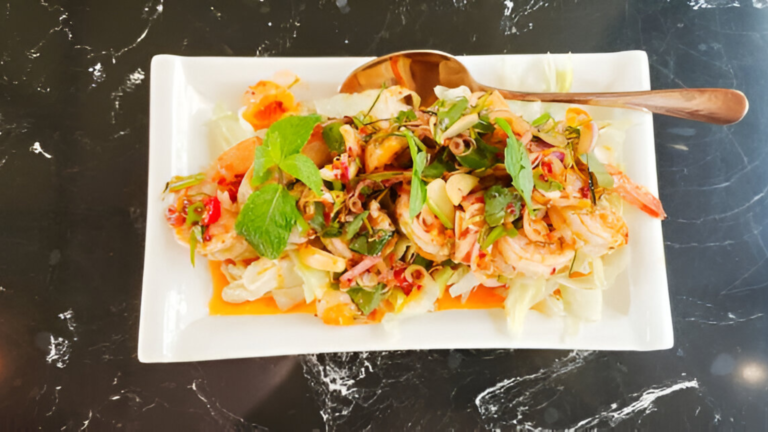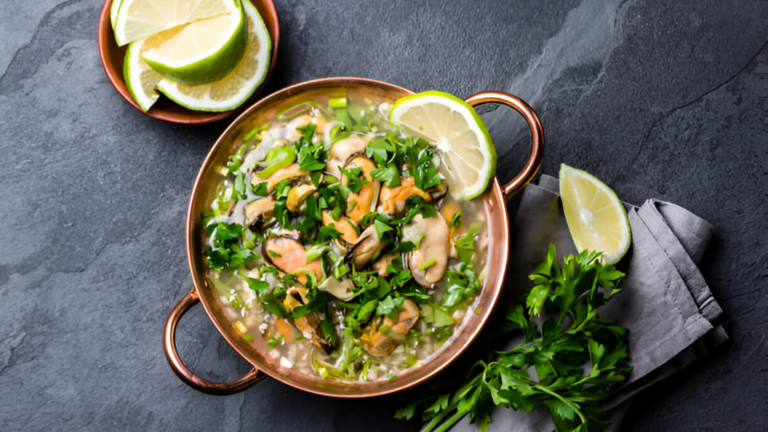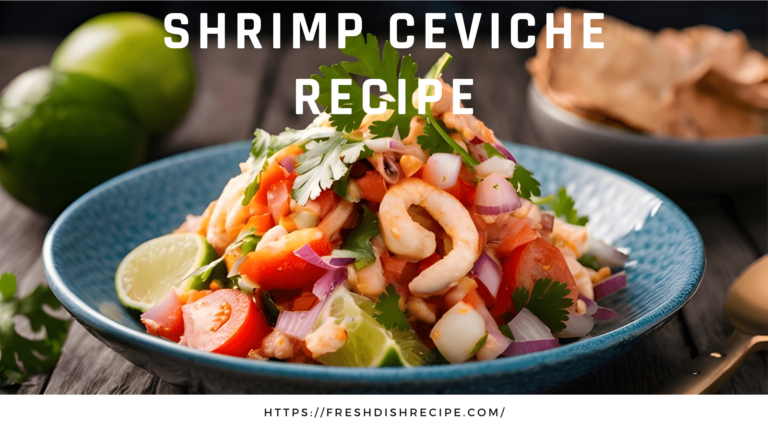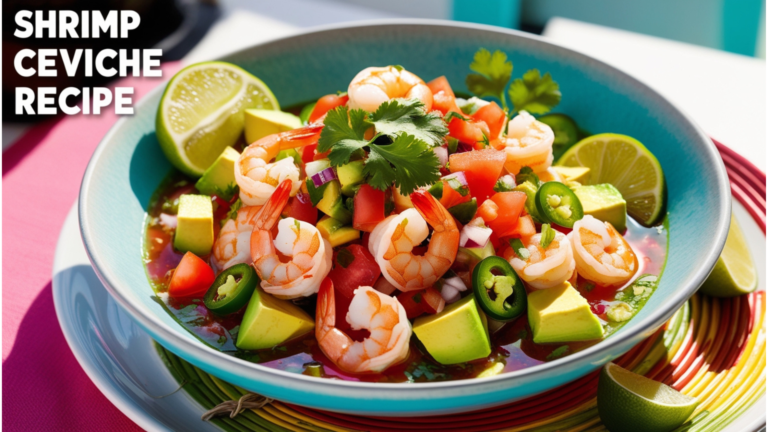Table of Contents
Ceviche, a dish as vibrant and diverse as the cultures that embrace it, has captivated palates worldwide. This simple yet sophisticated culinary masterpiece, often defined by its refreshing combination of seafood marinated in citrus juices, transcends borders, adapting to local flavors and ingredients wherever it goes.
From its humble beginnings in the coastal regions of Latin America to its contemporary interpretations across the globe, ceviche has become a symbol of freshness, flavor, and creativity. But to truly appreciate the depth and breadth of this dish, it’s essential to explore the different types of ceviche that have emerged from various culinary traditions. Understanding these variations not only broadens your palate but also deepens your appreciation for the rich cultural tapestry that ceviche represents.

The Origins of Ceviche
Tracing the Roots: A Historical Journey Through South America
Ceviche’s origins are steeped in the history and traditions of South America, particularly along the Pacific coast. While Peru is often credited as the birthplace of ceviche, the dish likely has roots that extend back to the indigenous peoples of what is now Ecuador and Peru. These ancient cultures were known for their reliance on seafood and the use of acidic marinades to preserve and flavor their catches. The arrival of Spanish colonizers introduced new ingredients like lime and onion, which were quickly adopted and integrated into local culinary practices. Over time, ceviche evolved from a simple method of preserving fish to a beloved dish celebrated for its fresh, tangy, and invigorating flavors.
How Ceviche Evolved Across Different Cultures
As ceviche spread across the Americas, it was embraced and adapted by various cultures, each adding its unique twist. In Mexico, for example, the addition of tomatoes, cilantro, and avocado transformed ceviche into a colorful, flavor-packed dish that reflects the vibrancy of Mexican cuisine.
In Ecuador, ceviche took on a new dimension with the introduction of shrimp and the unexpected addition of tomato sauce, creating a dish that is as bold as it is delicious. Beyond Latin America, ceviche has been influenced by global culinary traditions, resulting in innovative fusions that incorporate ingredients and techniques from Asia, the Caribbean, and beyond. Each variation of ceviche tells a story of cultural exchange and culinary creativity, making it a dish that is both deeply rooted in tradition and constantly evolving.
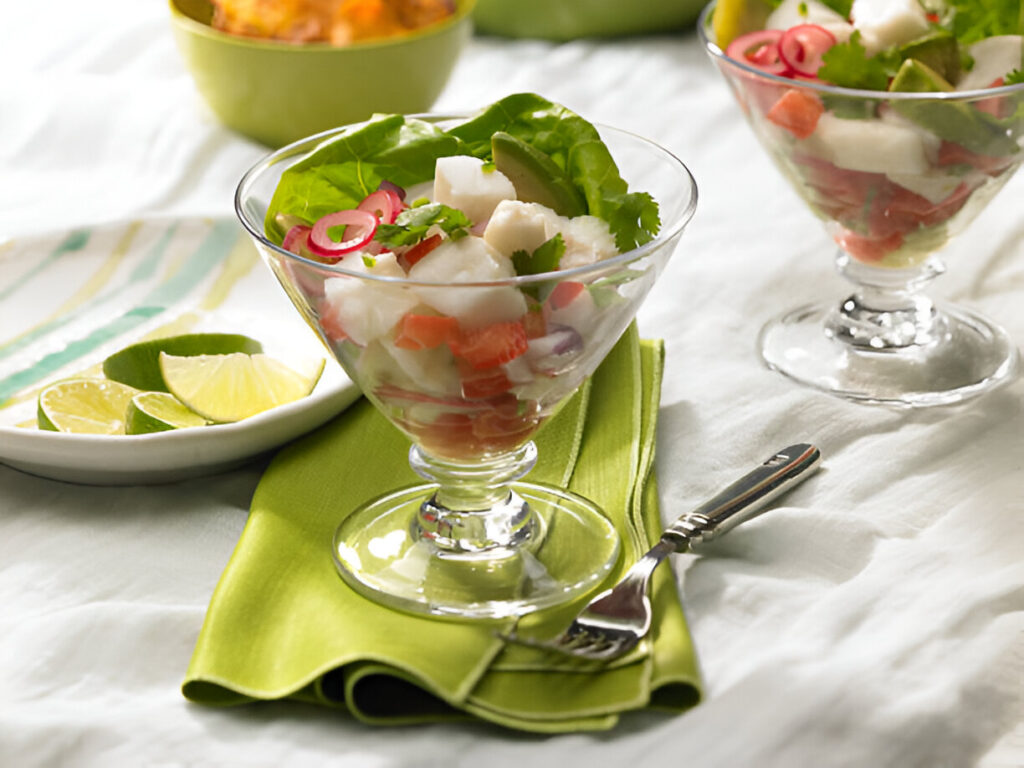
Classic Peruvian Ceviche
The Traditional Recipe: Fish, Lime, and a Touch of Spice
Peruvian ceviche is the gold standard by which all other versions are measured. At its core, the dish is deceptively simple: fresh fish, typically a firm white variety like corvina or sea bass, is cut into bite-sized pieces and marinated in freshly squeezed lime juice.
The acid from the lime “cooks” the fish, giving it a delicate texture and a bright, tangy flavor. To this, a handful of finely sliced onions, a sprinkle of salt, and a dash of fiery aji pepper are added, creating a dish that is as refreshing as it is flavorful. The key to a perfect Peruvian ceviche lies in the quality and freshness of the ingredients, as well as the balance of acidity and heat.
The Role of Leche de Tigre in Peruvian Ceviche
No discussion of Peruvian ceviche would be complete without mentioning leche de tigre, or “tiger’s milk.” This zesty, milky liquid, which forms as the fish marinates in lime juice, is considered by many to be the soul of the dish. In Peru, it is often served as a shot alongside ceviche, believed to be a potent hangover cure and a powerful aphrodisiac.
Leche de Tigre is more than just a byproduct of the marination process; it is a flavorful elixir that captures the essence of the dish, combining the sharpness of lime, the heat of chili, and the briny sweetness of the fish. Some versions even include a splash of fish stock or a touch of ginger, adding depth and complexity to this already tantalizing liquid.
Popular Variations: Corvina, Sea Bass, and Mahi Mahi
While the traditional Peruvian ceviche often features corvina or sea bass, other fish like mahi mahi are also popular choices. Each type of fish brings its unique texture and flavor to the dish. Corvina, with its firm flesh and mild flavor, is a favorite for its ability to absorb the flavors of the marinade without losing its integrity. Sea bass, on the other hand, offers a buttery richness that pairs beautifully with the acidity of the lime juice. Mahi Mahi, with its slightly sweet and flaky texture, adds a new dimension to the dish, making it a popular choice for those looking to experiment with different types of seafood in their ceviche.
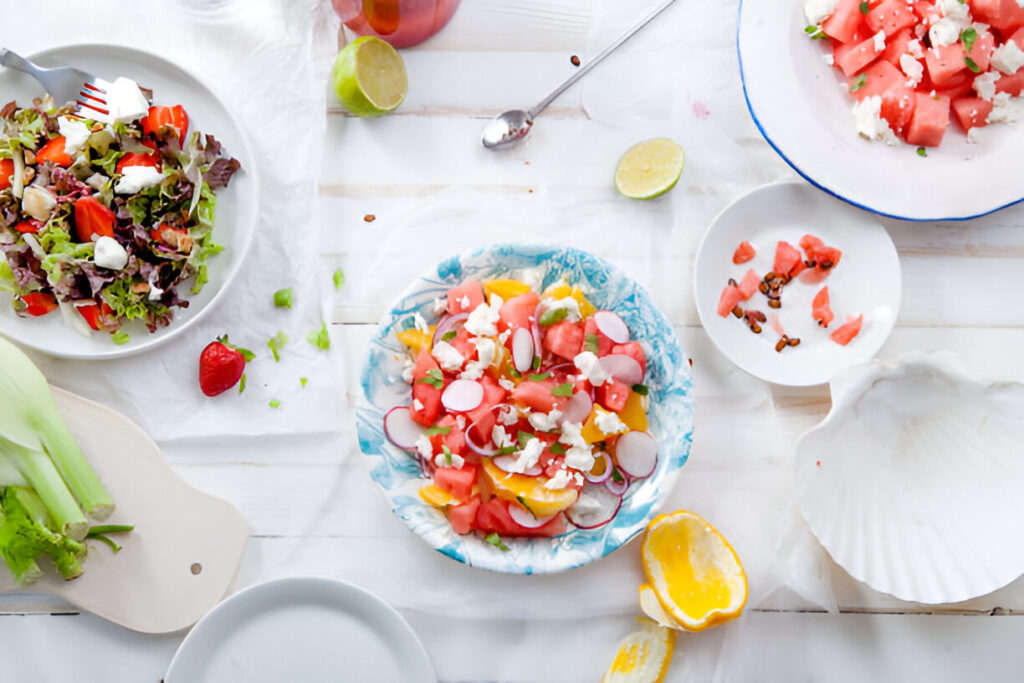
Mexican Ceviche: A Burst of Flavors
Key Ingredients: Avocado, Tomatoes, and Cilantro
Mexican ceviche is a feast for the senses, bursting with color and flavor. The addition of ingredients like ripe tomatoes, creamy avocado, and fragrant cilantro gives Mexican ceviche a distinctly vibrant and fresh profile. These ingredients not only add flavor but also create a beautiful contrast of textures, with the smoothness of the avocado balancing the crispness of the vegetables and the tender bite of the seafood. Lime juice remains the key component of the marinade, but it is often complemented by a splash of orange juice, which adds a subtle sweetness that tempers the acidity. This combination of flavors and textures makes Mexican ceviche a truly dynamic dish that is as satisfying as it is refreshing.
How Mexican Ceviche Differs from Other Latin American Versions
While Mexican ceviche shares many similarities with its Latin American counterparts, it stands out for its bold use of ingredients and its emphasis on freshness. Unlike the more minimalist Peruvian ceviche, which relies on a few carefully chosen ingredients, Mexican ceviche is often a medley of flavors and colors, reflecting the country’s rich culinary tradition. The use of ingredients like jalapeño or serrano peppers adds a spicy kick, while the inclusion of fruits like mango or papaya can introduce a sweet, tropical note. Additionally, Mexican ceviche is often served with crunchy tostadas or tortilla chips, providing a satisfying contrast to the tender seafood and juicy vegetables.
Exploring Regional Variations: Sinaloa-Style and Yucatan-Style Ceviche
Within Mexico, there are several regional variations of ceviche, each with its unique character. Sinaloa-style ceviche, for example, is known for its simplicity and purity of flavor. Typically made with shrimp, cucumber, and red onion, this version is all about letting the fresh seafood shine, with just a hint of lime and chili to enhance the natural sweetness of the shrimp.
Yucatan-style ceviche, on the other hand, incorporates the region’s love for bold flavors and tropical ingredients. It often features fish or shrimp marinated in a mixture of lime and sour orange juice and is served with a side of habanero salsa for an extra kick of heat. Both styles offer a distinct taste of Mexico’s diverse culinary landscape, showcasing the versatility and adaptability of ceviche.
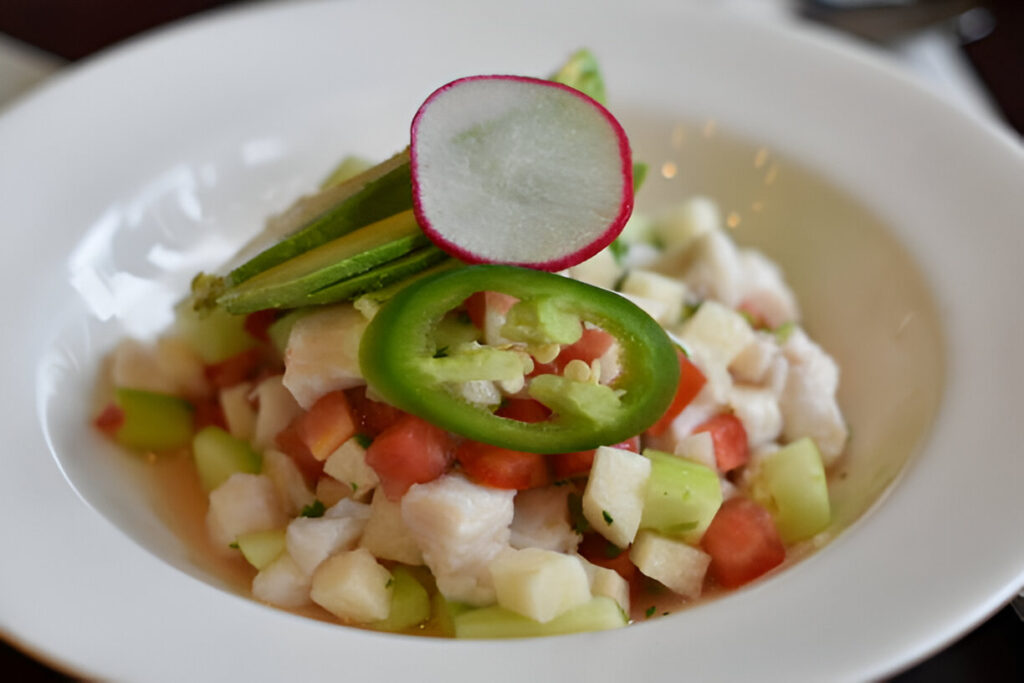
Ecuadorian Ceviche: A Unique Twist
The Surprising Use of Tomato Sauce
Ecuadorian ceviche stands out from other Latin American versions due to its unique use of tomato sauce as a base for the marinade. This addition gives the dish a rich, savory depth that is quite different from the bright, citrus-forward flavors of Peruvian or Mexican ceviche.
The tomato sauce is typically combined with lime juice, red onion, and a variety of seasonings, creating a marinade that is both tangy and slightly sweet. This combination of flavors pairs beautifully with the seafood, creating a ceviche that is hearty and satisfying, yet still refreshingly light. The use of tomato sauce in Ecuadorian ceviche is a testament to the creativity and adaptability of this dish, showcasing how it can be reinterpreted to suit local tastes and ingredients.
Why Shrimp Ceviche Is the Star in Ecuador
While fish is the traditional choice for ceviche in many countries, in Ecuador, shrimp reigns supreme. Ecuadorian shrimp ceviche is beloved for its tender, succulent texture and its ability to absorb the flavors of the marinade. The shrimp are typically poached before being marinated, which gives them a slightly firmer texture and ensures that they are fully cooked. The combination of the sweet, briny shrimp with the tangy tomato-lime marinade is truly irresistible, making Ecuadorian shrimp ceviche a standout dish in its own right. This version of ceviche is often garnished with fresh cilantro and served with a side of popcorn or chiles (fried plantain chips), adding a delightful crunch to each bite.
How to Enjoy Ceviche with Plantain Chips
In Ecuador, ceviche is often enjoyed with a side of plantain chips, known as chiles. These crispy, golden chips are the perfect accompaniment to the tangy, savory ceviche, providing a satisfying contrast of textures. The slight sweetness of the plantains also complements the acidity of the ceviche, creating a harmonious balance of flavors. To enjoy ceviche with plantain chips, simply scoop up a generous portion of the ceviche with a chip, ensuring that you get a bit of the marinated seafood, vegetables, and sauce in each bite. This combination is not only delicious but also offers a taste of Ecuador’s culinary traditions, making it a must-try for ceviche lovers.
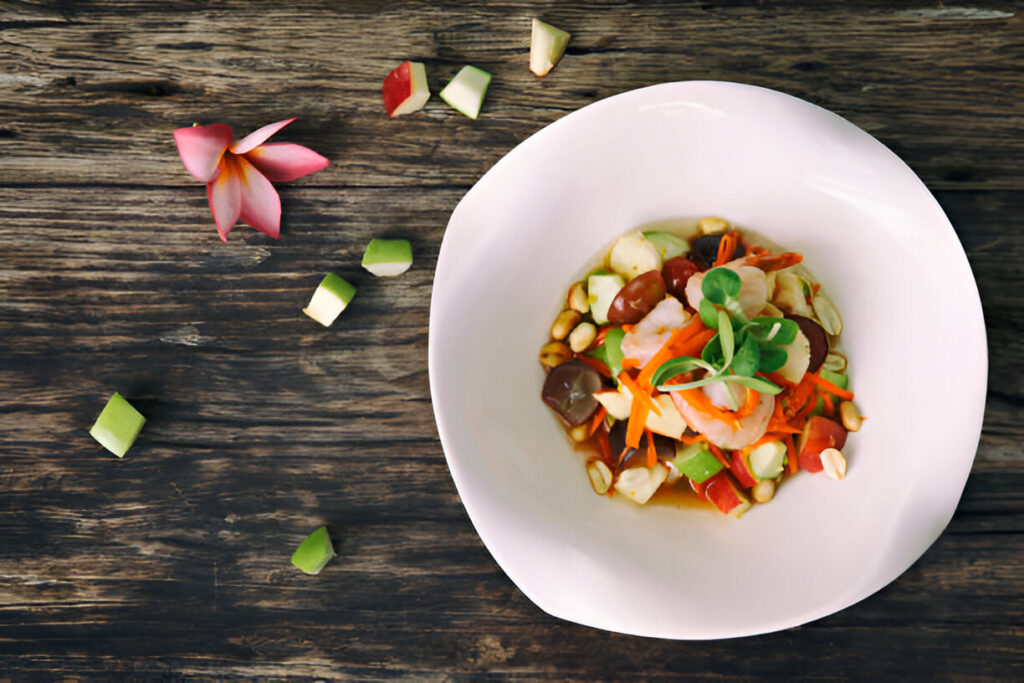
Asian-Influenced Ceviche
Fusion of Flavors: How Japanese and Thai Cuisines Inspire Modern Ceviche
The global popularity of ceviche has led to innovative fusion dishes that draw on culinary traditions from around the world. One of the most exciting developments in recent years has been the incorporation of Asian flavors into ceviche. Japanese and Thai cuisines, in particular, have had a significant influence on modern ceviche, bringing new ingredients and techniques to the table
. The Japanese love for raw fish and precise, delicate flavors has led to the creation of ceviches that are minimalist yet deeply flavorful. Ingredients like soy sauce, sesame oil, and ginger add a savory umami depth to the dish, while the use of thinly sliced fish or seafood highlights the freshness and quality of the ingredients. Thai-inspired ceviche, on the other hand, is known for its bold, zesty flavors, with the addition of ingredients like lemongrass, chili, and coconut milk creating a vibrant, aromatic dish that is both refreshing and satisfying.
Key Ingredients: Soy Sauce, Ginger, and Sesame Oil
In Asian-influenced ceviche, soy sauce, ginger, and sesame oil are often used to add depth and complexity to the dish. Soy sauce brings a salty, savory flavor that complements the natural sweetness of the seafood, while ginger adds a spicy, aromatic note that enhances the freshness of the dish. Sesame oil, with its rich, nutty flavor, provides a luxurious finish, adding a layer of richness that contrasts beautifully with the bright acidity of the lime juice. These ingredients, when used in moderation, create a balanced and harmonious ceviche that is both familiar and exotic, offering a new twist on a classic dish.
Recipes to Try: Tuna Ceviche with a Dash of Wasabi
One of the most popular Asian-influenced ceviche recipes is tuna ceviche with a dash of wasabi. This dish combines the clean, delicate flavors of fresh tuna with the bold, fiery kick of wasabi, creating a dish that is both refreshing and exhilarating. The tuna is typically marinated in a mixture of lime juice, soy sauce, and sesame oil, which helps to accentuate its natural sweetness and tender texture. A small amount of wasabi is then added to the marinade, providing a subtle heat that lingers on the palate without overpowering the dish. The result is a ceviche that is both light and flavorful, with a perfect balance of acidity, umami, and spice.

Tropical and Fruit-Infused Ceviche
The Rise of Fruit Ceviche: Mango, Pineapple, and Coconut Variations
Tropical and fruit-infused ceviche has become increasingly popular in recent years, offering a fresh and vibrant take on the traditional dish. The addition of fruits like mango, pineapple, and coconut brings a natural sweetness that pairs beautifully with the acidity of the lime juice and the briny seafood.
These tropical ingredients not only add flavor but also create a stunning visual appeal, with their bright colors and juicy textures making the dish as pleasing to the eye as it is to the palate. Mango ceviche, for example, combines the silky sweetness of ripe mango with the tangy, citrusy flavors of the marinade, creating a dish that is both refreshing and indulgent. Pineapple ceviche, on the other hand, adds a tropical twist with its juicy, slightly tart flavor, while coconut ceviche offers a creamy, luscious texture that is perfectly balanced by the zesty lime juice.
How to Balance Sweetness with Acidity
One of the key challenges in creating fruit-infused ceviche is finding the right balance between sweetness and acidity. While the natural sweetness of the fruit can add a delightful contrast to the dish, it’s important to ensure that it doesn’t overpower the other flavors. To achieve this balance, it’s essential to use just enough lime juice to cut through the sweetness and add a bright, tangy note that complements the fruit. Additionally, the use of fresh herbs like cilantro or mint can help to add a touch of freshness and complexity, while a pinch of salt can enhance the overall flavor profile, bringing all the elements together in perfect harmony.
Perfect Pairings: What to Serve with Fruit-Infused Ceviche
Fruit-infused ceviche is a versatile dish that can be served in a variety of ways, depending on the occasion and your personal preferences. For a light and refreshing appetizer, serve the ceviche in small cups or on individual spoons, garnished with a sprig of fresh herbs or a slice of citrus. If you’re looking for something more substantial, pair the ceviche with crispy tortilla chips or thin slices of toasted baguette, which provide a satisfying crunch that contrasts beautifully with the tender, juicy seafood and fruit. For a truly tropical experience, serve the ceviche in a hollowed-out pineapple or coconut shell, adding an extra touch of flair and flavor to the dish.

Vegetarian and Vegan Ceviche
Fresh and Zesty: Ceviche Without Seafood
While ceviche is traditionally made with seafood, there are plenty of vegetarian and vegan alternatives that are just as fresh and flavorful. By using a combination of fresh vegetables, fruits, and plant-based proteins, you can create a ceviche that captures all the zesty, tangy goodness of the original dish, without any animal products. The key to a successful vegetarian or vegan ceviche is to use ingredients that have a firm, meaty texture and can absorb the flavors of the marinade.
Vegetables like mushrooms, hearts of palm, and artichokes are excellent choices, as they provide a satisfying bite and a neutral flavor that pairs well with the citrusy marinade. You can also experiment with adding fruits like avocado or mango, which add a creamy, rich texture and a touch of sweetness to the dish.
Key Ingredients: Mushrooms, Hearts of Palm, and Artichokes
Mushrooms, hearts of palm, and artichokes are the stars of vegetarian and vegan ceviche, providing a hearty, satisfying base that can hold up to the bold flavors of the marinade. Mushrooms, particularly varieties like oyster or shiitake, have a firm, meaty texture that mimics the bite of seafood, while also adding a rich, earthy flavor to the dish. Hearts of palm, with their tender, slightly nutty flavor, are another great option, offering a light, refreshing contrast to the tangy marinade.
Artichokes, whether fresh or marinated, add a unique flavor and texture to the ceviche, with their tender leaves and firm hearts providing a satisfying bite. Together, these ingredients create a ceviche that is both flavorful and filling, without relying on seafood.
Tips for Achieving the Perfect Texture and Flavor
To achieve the perfect texture and flavor in vegetarian and vegan ceviche, it’s important to marinate the ingredients long enough to allow them to absorb the flavors of the marinade, but not so long that they become mushy. Start by cutting the vegetables into bite-sized pieces, then toss them in the lime juice and other seasonings, making sure that each piece is evenly coated.
Let the ceviche marinate for at least 30 minutes to an hour, depending on the ingredients, then taste and adjust the seasoning as needed. If you’re using heartier vegetables like mushrooms or artichokes, you may want to marinate them overnight to allow the flavors to fully develop. For added flavor and texture, consider tossing in some diced avocado, chopped cilantro, or a sprinkle of chili flakes just before serving.

How to Pair Ceviche with Drinks
The Best Cocktails and Wines to Complement Different Types of Ceviche
Pairing ceviche with the right drink can elevate the dish to new heights, bringing out the flavors of the ceviche and creating a harmonious dining experience. For traditional Peruvian ceviche, a crisp, dry white wine like Sauvignon Blanc or Albariño is an excellent choice, as it complements the acidity of the lime juice and the freshness of the fish.
If you prefer cocktails, a classic Pisco Sour, with its bright citrus flavors and frothy texture, is the perfect match for ceviche, adding a touch of sweetness and a refreshing kick. For Mexican ceviche, consider pairing it with a light, citrusy beer like a Mexican lager or a Michelada, which balances the bold flavors of the ceviche with its light, effervescent character. For fruit-infused ceviche, a tropical cocktail like a Piña Colada or a Mojito can enhance the sweetness of the fruit and add a refreshing, summery vibe to the dish.
Non-Alcoholic Options for a Refreshing Experience
If you prefer non-alcoholic options, there are plenty of refreshing drinks that pair beautifully with ceviche. A glass of iced tea with a squeeze of lime and a sprig of mint can be a light and refreshing choice, complementing the flavors of the ceviche without overpowering the dish. For something a bit more exotic, try a refreshing agua fresca made with fresh fruit like watermelon, pineapple, or cucumber, which adds a touch of natural sweetness and a burst of flavor. Sparkling water with a twist of lime or a splash of fruit juice is another great option, offering a light, bubbly contrast to the tangy, zesty ceviche.
Serving Tips: How to Create a Complete Ceviche Experience
Creating a complete ceviche experience is all about presentation and pairing. Start by serving the ceviche in small, attractive dishes, such as glass bowls or seashells, which allow the vibrant colors of the dish to shine. Garnish each serving with a sprinkle of fresh herbs, a slice of citrus, or a few slices of chili for a touch of flair. Pair the ceviche with a selection of drinks that complement the flavors of the dish, and consider offering a variety of ceviches to showcase the different types and styles.
To complete the experience, serve the ceviche with a side of crispy tortilla chips, toasted bread, or plantain chips, which add a satisfying crunch and a contrast of textures. With the right presentation and pairings, you can create a ceviche experience that is both memorable and delicious.
Conclusion
Ceviche is more than just a dish; it is a culinary journey that takes you through the diverse flavors and traditions of the world. From the classic Peruvian ceviche to the bold and vibrant Mexican versions, the unique twists of Ecuadorian ceviche, and the innovative Asian and fruit-infused creations, each type of ceviche
offers a unique and exciting experience. Whether you are a seasoned ceviche enthusiast or new to this delicious dish, there is always something new to discover and enjoy. So don’t be afraid to experiment with different types of ceviche, try new ingredients, and find your favorite version. And most importantly, share your ceviche creations and experiences with others, as the joy of ceviche is best enjoyed with friends and loved ones.


